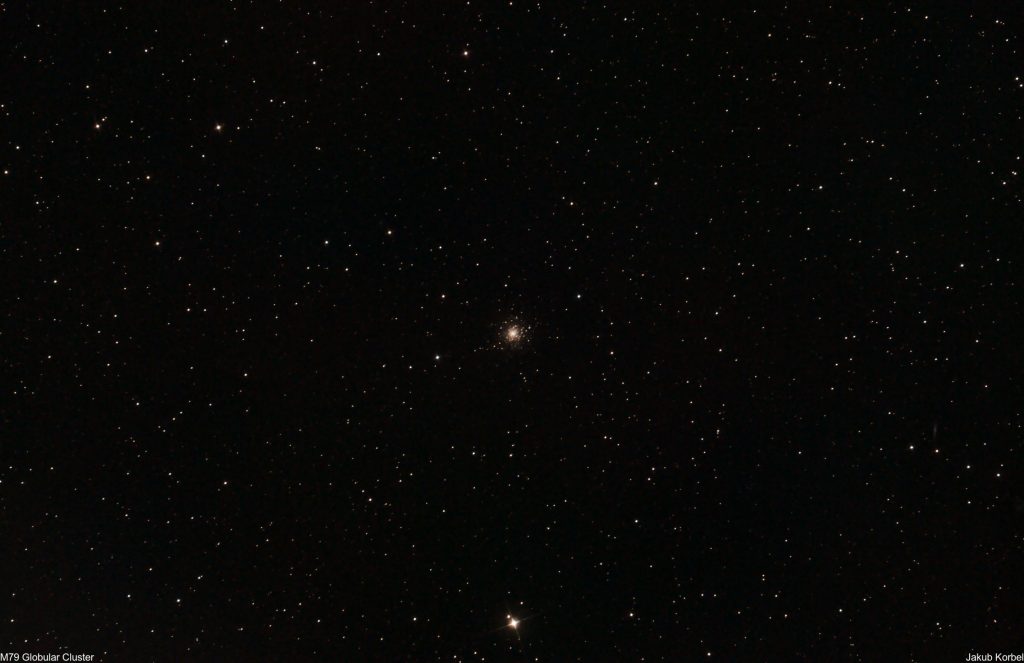Messier 79 is a globular cluster located in constellation Lepus. This cluster is particularly interesting, because it can be observed/photographed only in winter and there is no other globular cluster in that part of the sky. Most of the globular clusters are visible in summer, when the galactic center is shows its beauty. This means that most of the globular clusters are close to the galactic center, but M79 is actually at the edge of our galaxy. Diameter of our own Milky Way galaxy is approximately 100,000 light-years. M79 is roughly 60,000 light-years far from galactic center and 42,100 light years away from earth. The study conducted in 2003 revealed the concentration of the stars in constellation Canis Major, which is neighboring constellation to Lepus and it was assumed that there is a dwarf galaxy there. Latest studies disproved this theory and the star concentration is assumed to be caused just by the spiral arm of the Milky Way.
This deep space object is extremely difficult to capture due to its very low declination if observed from Central Europe. Moreover, also the optics was not cooperating this night. I must admit it’s the worst picture of a globular cluster I have ever made. But if I want to complete Messier catalogue this year, I have to publish it as it is. I hope I will get an opportunity to recapture M79 next year.

Technical details:
| Telescope | Newton 150/600 mm |
| Aperture | 150 mm |
| Focal length | 570 mm |
| Mount | Avalon M-Zero |
| Autoguiding | ZWO 174MM, Guidescope 30 mm |
| Camera | ZWO 071 Pro @-15°C |
| Corrector | TS MaxField |
| Filters | Hutech IDAS LPS-D2 |
| Exposure | 22x60s, Gain 134, bin 1x1, |
| Date | 2019-01-15 |
